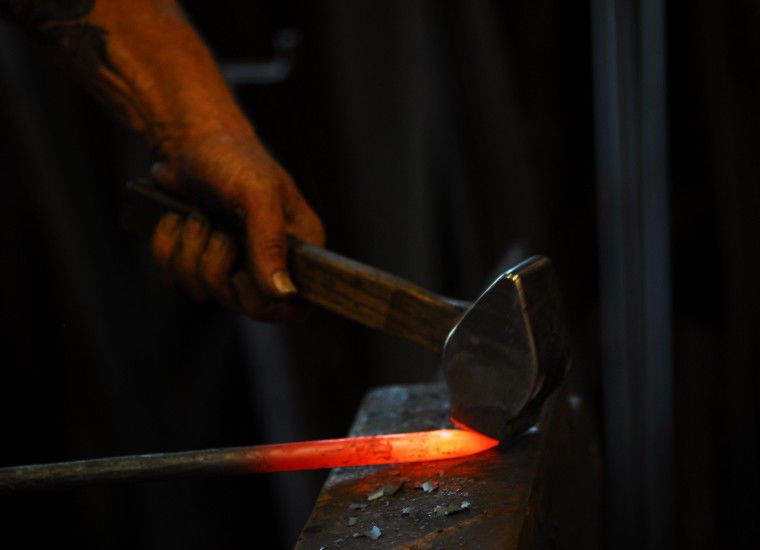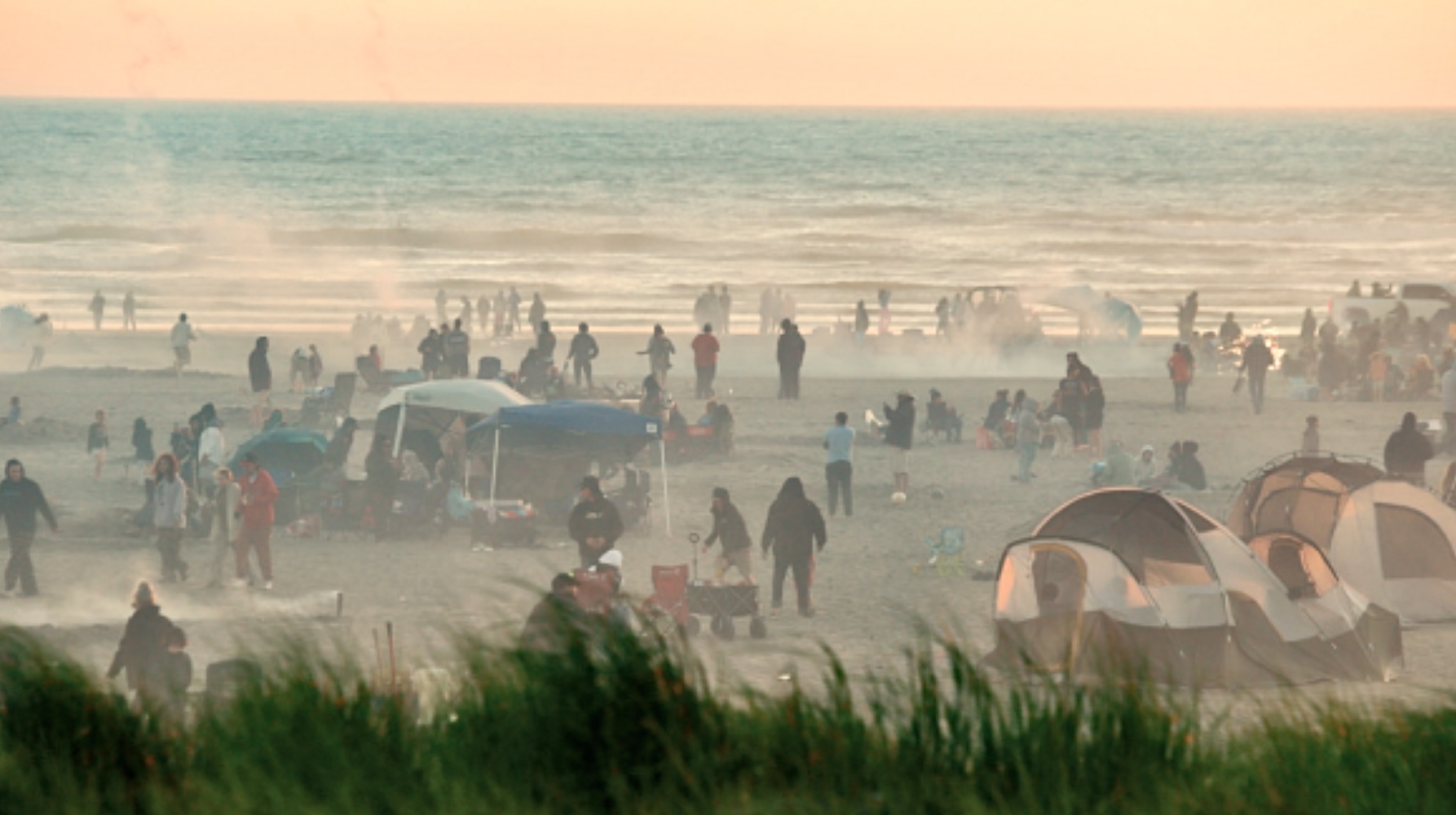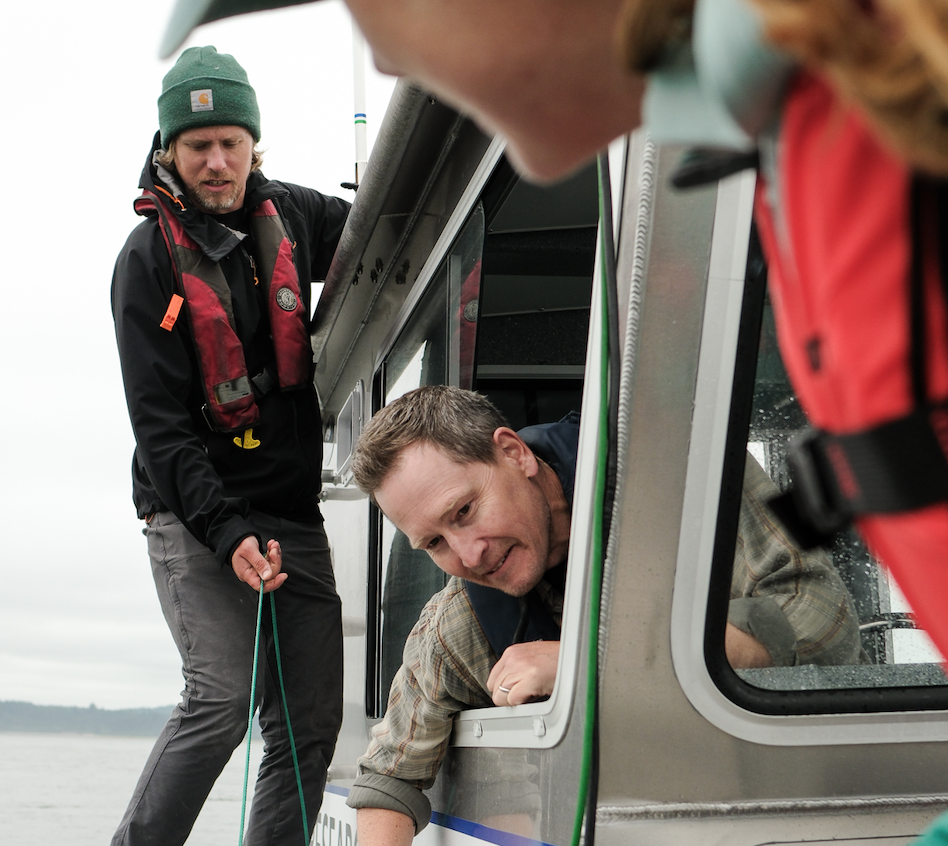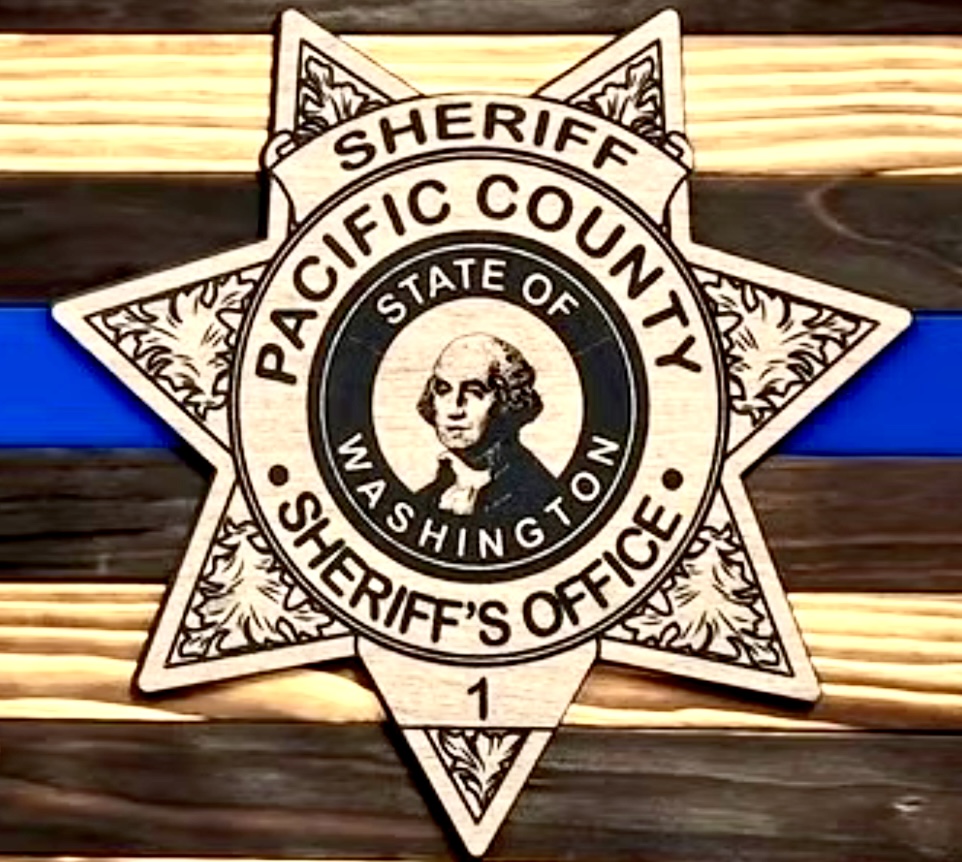An old fashioned hammerin’
Published 5:00 pm Monday, July 25, 2011

- Blacksmith retreat
NASELLE On David and Karen Curls five-acre plot tucked away on a hillside just east of Naselle, the 8,000-year-old craft of blacksmithing is being revived. This past weekend, the Curls hosted the third annual Solstice Forge for all comers experienced smithies and neophytes alike.
The Curls have been blacksmithing and welding for 10 years both have been instructors at Clatsop Community College and they are also part of the Columbia Pacific Preservation Craftsman Guild which brings together restoration artists from various trades.
Weve had a great time this weekend, a lot of fun, said David, as he prepared the coal forge for another set of participants to try their hand at link welding. Weve had people all weekend and last night we were up til midnight watching Lydia do her fire dance.
Lydia wants to be a blacksmith but its kind of tough its feast or famine, he said. Used for making weapons, tools, shodding horses, and equipment repair, blacksmithing, once an essential part of community life, has all but fallen by the wayside. The Curls and a small band of dedicated craftspeople are bringing it back.
New Generation of Blacksmiths
Lydia Keehn and her boyfriend Joshua Rach, from Portland, working on a propane forge, are proof that a younger generation is taking an interest in this ancient art. I first took a class from Dave at Tongue Point and I just really liked it, she said. She has a rod of red-hot iron grasped in a pair of tongs and places it on an anvil while Rach hammers it.
Right here, she says pointing, and the metal begins to flatten and elongate as Rach hammers away. The color changes as the metal cools and Keehn puts the rod back in the forge to heat it up again. Nearly an hour later, she shows off a delicately pointed leaf that will eventually be attached to a stemmed rose that she made earlier in the weekend.
Blacksmithing is about metal, high temperatures and fire; so it is not surprising that Keehn has also perfected what is called the Fire Poi Ball Dance, a Maori tradition, involving spinning flaming balls at the ends of chains. Keehn illustrates different twirling maneuvers and patterns which in a real performance would be accomplished by soaking the balls in gasoline and lighting them on fire.
Fire up the forge
Meanwhile, at the front of the property, David is lighting the coal forge for some iron link welding. He has prepared eight inch long rods of iron which will be heated and turned into oval shaped links closed by a hot weld. Everyone who has attended this summer solstice forge gathering has made a link for the chain, which is twenty plus links long.
Step one is to get the forge going by piling up small pieces of coal, lighting them and fanning up the flames with a hand-cranked Champion 400 blower. This blower is probably a hundred years old, David said. (He has a second Champion and forge that he intends to set up later in the year, equipment he picked up at a yard sale.)
Using the right kind of coal is important to the process. Curl buys his coal from a vendor in Monroe, Oregon who has Kentucky Cumberland bituminous coal with a high BTU. (A BTU, British thermal unit, is the amount of heat required to raise the temperature of one pound of water one degree Fahrenheit.) Anthracite coal is not good for forge work, David says. This bituminous is the finest coal east of the Rockies. When Im really working the forge, I can use a 40 pound bag of coal in ten hours.
The coal is mounded up in a pile and when its hot, the metal that will be worked is shoved deep into the pile into whats called the ducks nest, a red-hot coal cave. The blower mouth sits directly under the ducks nest and the oxygen blown into the mound causes the coal to fire up to between 2,200 and 4,000 degrees.
Managing the fire is part of the magic. You need to be able to read your fire to get the right temperature, said David. Theres red, orange, yellow and white hot, in that order.
For making the weld on the chain link, watch for a greenish yellow flame and then the flux will spark then you know its the right temperature to set your weld, he added.
Peach-ripe Red
One thing apparent about the blacksmithing trade is that the equipment either comes from another era or is made or repaired on the spot. There are metal tongs, hammers, anvils, clippers, vises and rods all over the workshop.
A huge wooden table holds a variety of projects metal drawer pulls, a metal vase of roses that David is making for his mother, a beautiful twisted beer opener and metal working texts and tools. Hanging in the open barn door is a huge metal wind chime crafted to look like bamboo.
David shows off the original forge used in a Deep River shipping repair business that was up for sale some time back. Thats a truck crankcase on the bottom there, he said pointing to an iron fitting that was added to modify or repair the forge. This forge was probably in use around 1910, 1920.
Show them the power hammer, Karen called out. She and David stand on either side of an enormous treadle contraption that David has rigged up to stamp metal. It is ten or twelve feet high with springs and an assortment of welded parts. This is a 56 pound weight and when you step on the foot bar it slams down with around one ton of force, he said illustrating the maneuver.
Thats a drawing die weve got on the hammer right now, he said, pointing to a rounded block of metal that the hammer slams down on. That rounded surface moves the metal out to the edges. Its used to draw out the iron, to make a taper for instance.
Understanding how to shape iron and steel takes a combination of book learning and hours of practice. Donnie Mead, a long-time friend, welder of 41 years and visitor from Oklahoma here for the Solstice Forge event, said, I worked with a fellow who used to tell me, look for that peach-ripe red to set your weld.
Master Smithy
Karen taught welding at Clatsop Community College and interested David in the process. They began their shop with welding repair and fabrication. But after awhile we got tired of working on rotten boat trailers, said David. We got a forge and an anvil and it just grew from that.
They studied with Frank Turley in Santa Fe, New Mexico. Turley Forge Blacksmithing School, founded in 1970, is considered the granddaddy of all blacksmithing schools and Turley himself a master of the craft. (See his website at http://www.turleyforge.com/)
Now the Curls are card-carrying members of the Artist Blacksmiths Association of America and the NorthWest Blacksmith Association. The couple is working primary in restoration and creating their own art pieces on commission. They have crafted all the metal shelves, logo and other items at the Fort George Brewery. At Fort George, they want to keep the feeling of the brewery as a blue collar working mans place they like the look of our handcrafted metal work, said David.
When asked where they get the iron materials they work with, David says, We like turning weapons into ironwork. This wind chime is made of pipe.
Learning the trade
Theres no secrets in blacksmithing, said David, emphasizing that people in the craft share information and help one another learn the trade. You have to develop your hammer swing and learn about metal. Eventually youll have the chance to be creative and develop your own style and do commission work like we are.
Clackamas Community College has a blacksmithing certificate program taught by Bert Romans; and Keehn mentioned that Beaverton Collage of Arts and Crafts also has blacksmithing classes. California College of Arts and Crafts in Oakland, CA has metal working courses.
Ill be teaching a welding class next February, David said, for two weekends.
Jessie Fulton, Knappa resident and another welding instructor at Clatsop Community College, arrived at the forge event with his two young sons Josh and Spencer. Both boys made their own welded links for the chain.
Part of learning the trade is becoming familiar with blacksmithing lingo the ducks nest, setting the weld, flux, the scarp, mild steel, migging, steam envelope, half blow, quenching the steel and understanding the details of how metal reacts to force and fire.
When you take your metal out of the forge, it loses 100 degrees a second, so youve got about five seconds to set your weld, said David as he closed a link.
Man at the forge
Im just bringing the fire up nice and easy, said David, back after a break, as he pumpcd the blower and patted the coal to glowing hot. He talks about working the metal as giving it life.
Karen has been watering the vegetable and garden beds scattered on their south-facing property while a group of visitors chats around the potluck table. Meanwhile, the Curls old friend Mead has been trying a different design for a link; but the metal has been heated too often and will not take the weld.
Sometimes the dragon wins, David commented about their craft, then added, But I always say, I guarantee my work for three generations or until I die, whichever comes first.









